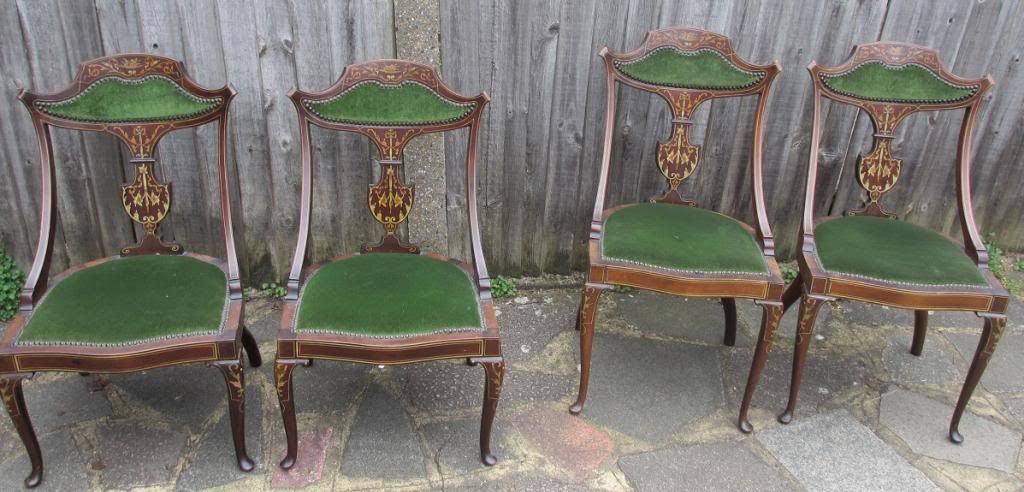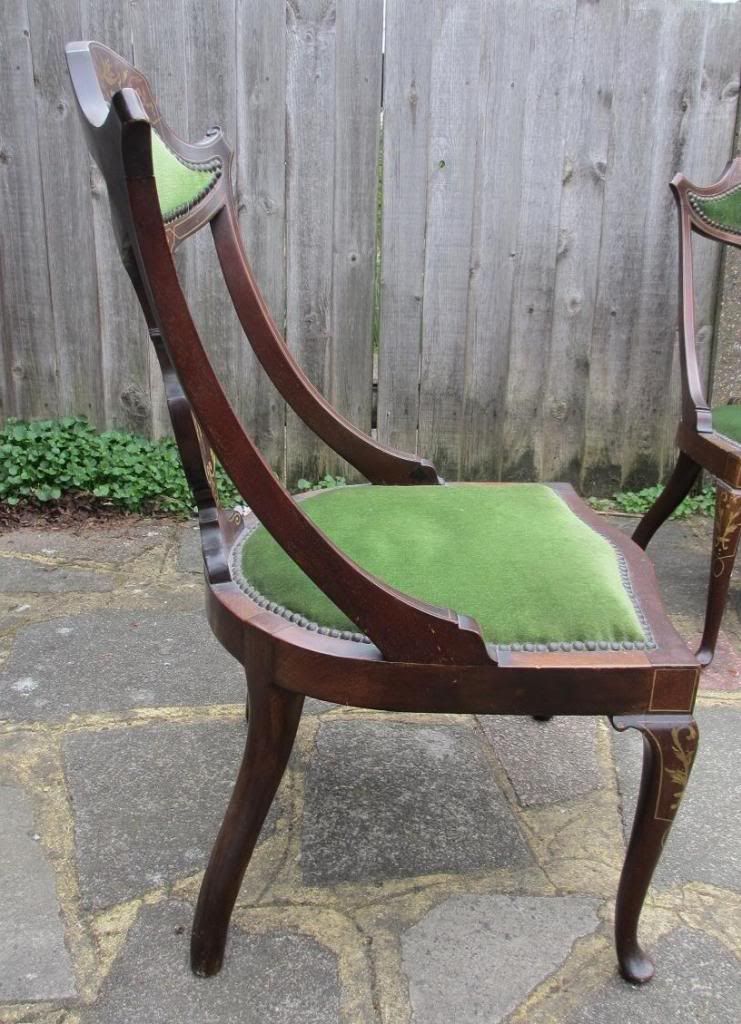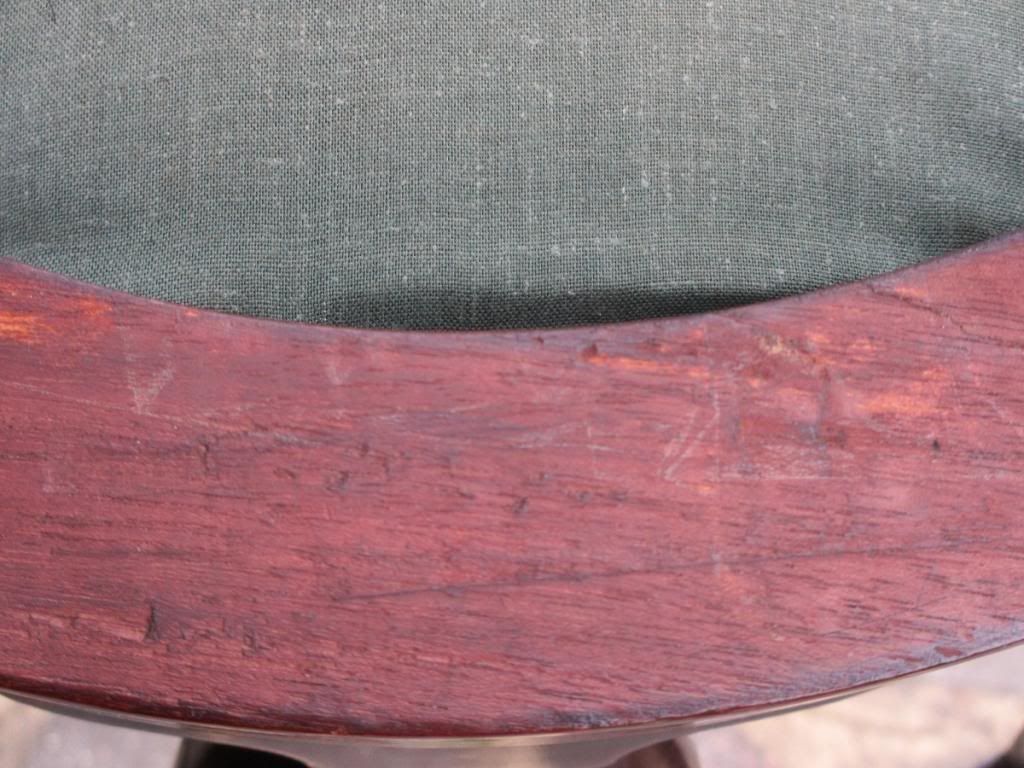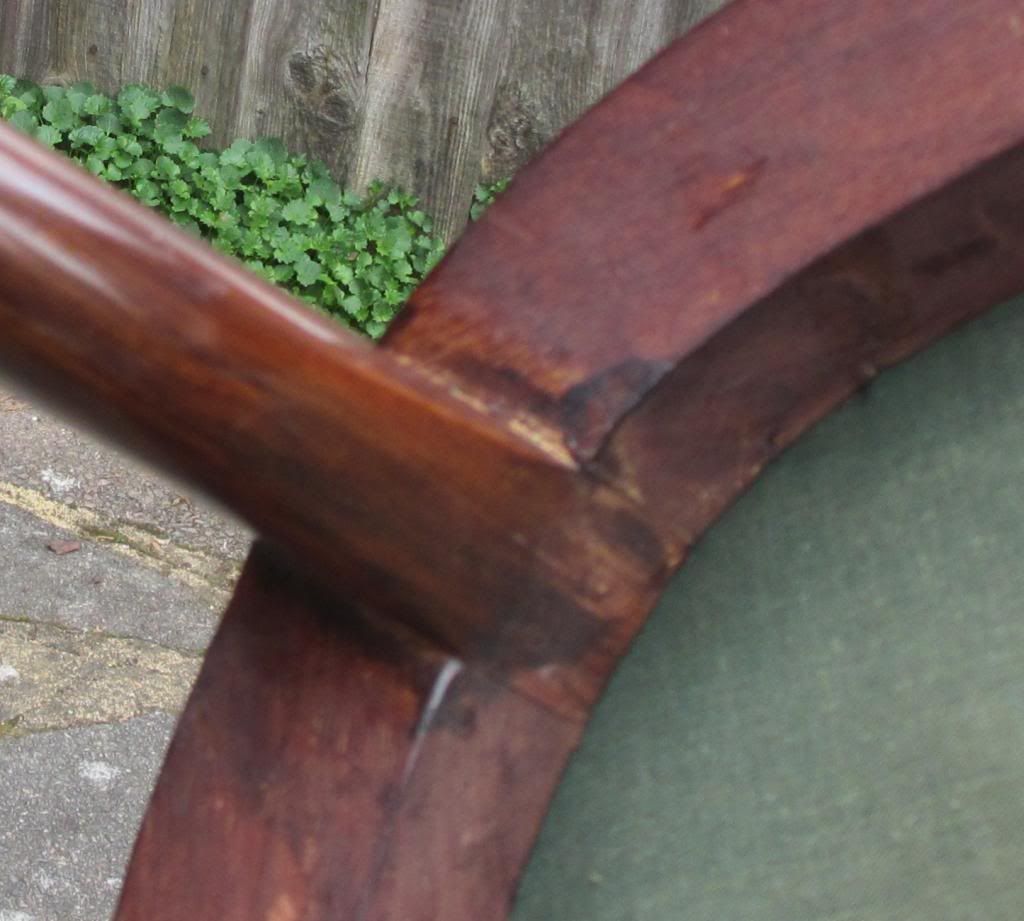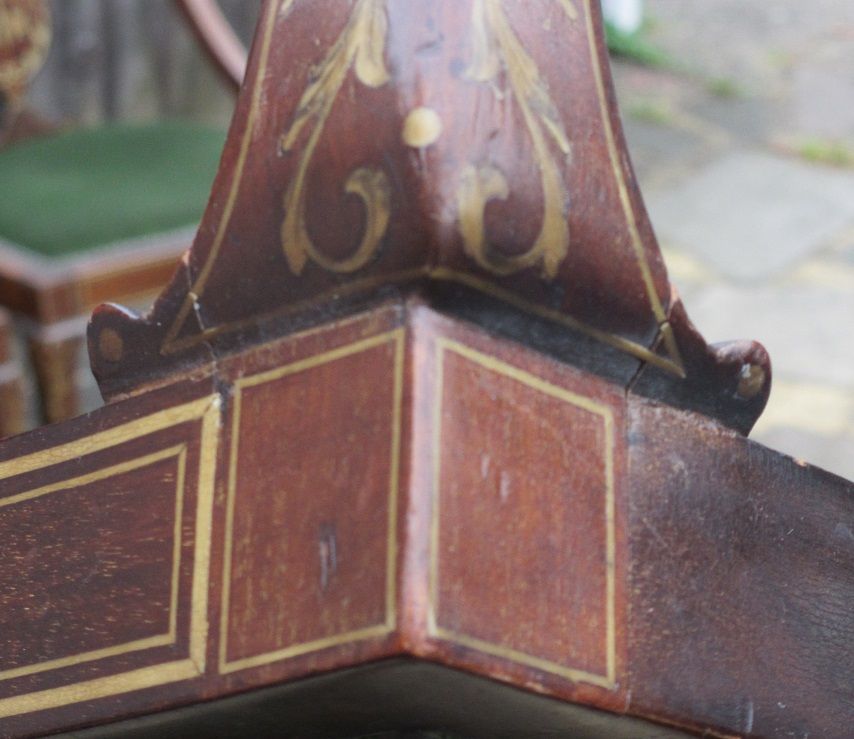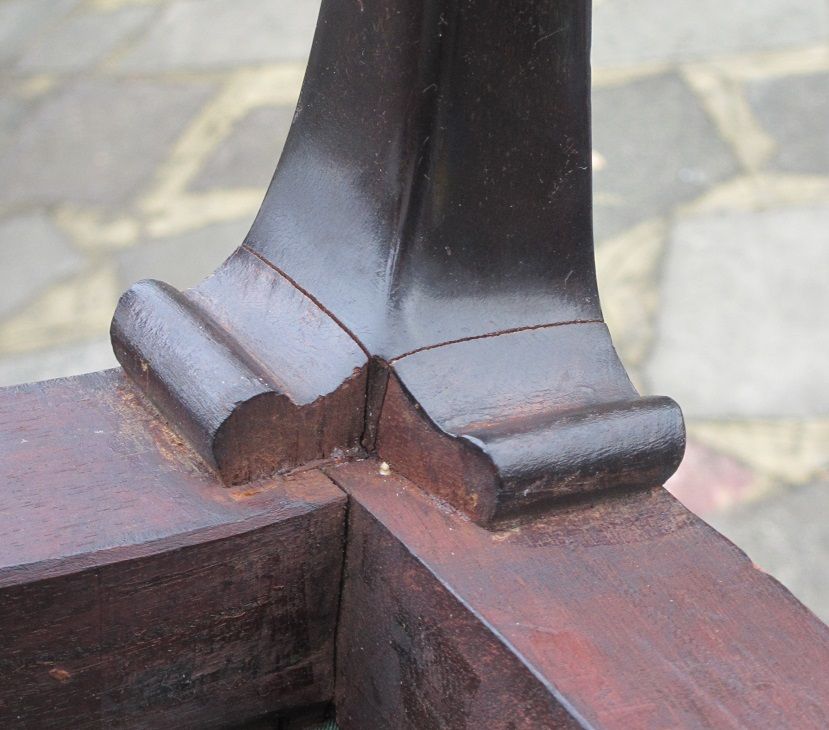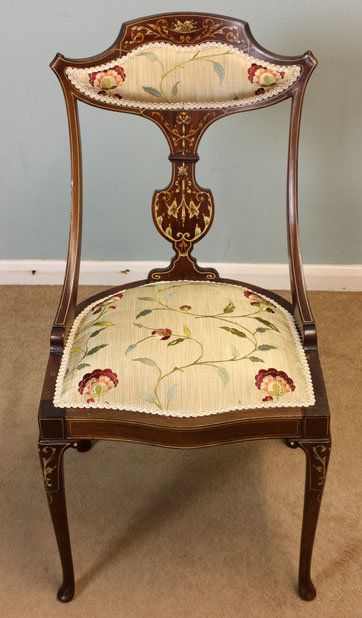I have four antique(?) chairs to dispose of for my father and would like to try and identify them before I approach any dealers/auctions/ebay etc. Hopefully, one or more of readers will be able to at least point me in the right direction.
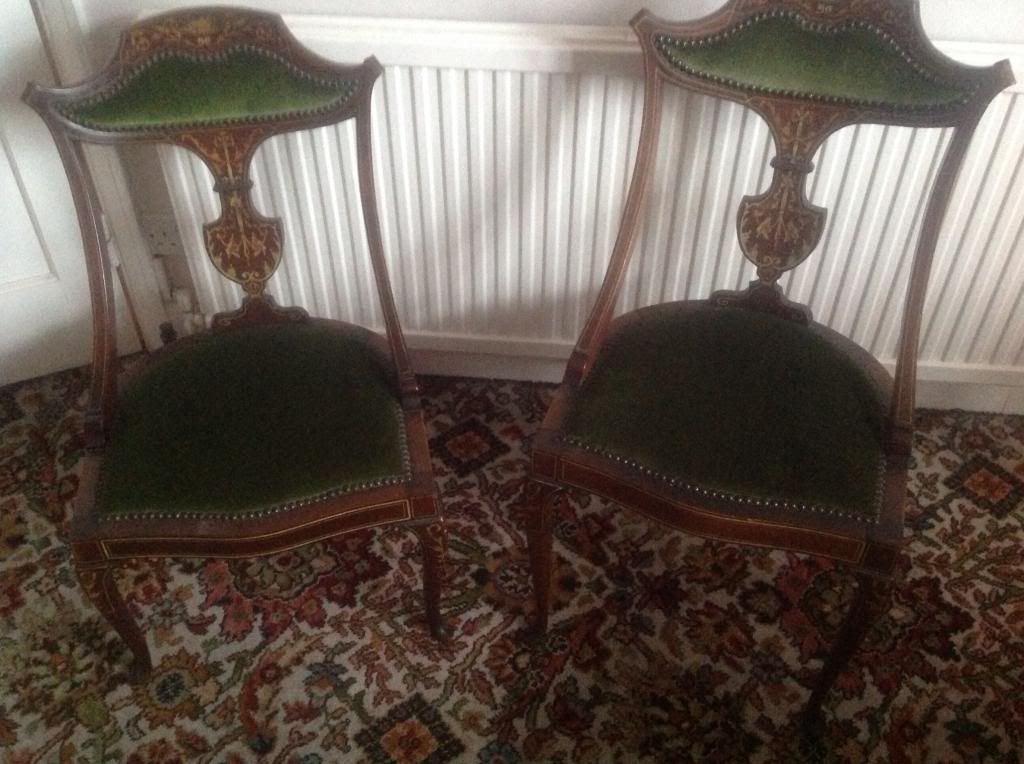
Sorry, the pics aren't clearer - my 85 year old Dad's the photographer. The chair backs are painted (not inlay).
In fact there's two pairs - you'll notice the left hand one is lower to the ground (almost child size). They were inherited from someone many moons ago and I can only date their provenance to the 1960's - so I guess they could be repro's rather than 'proper' antiques. However, the local skip delivery driver (who does a lot of house clearances) offered £100 on the spot but I'd like to know a bit more before I sell them. An online search of antique dealers etc hasn't revealed the same type of chairs but legs are chippendale style, another describes them as 'fancy' chairs but I'm really none the wiser.
Any help/thoughts would be welcome.
Mike

Sorry, the pics aren't clearer - my 85 year old Dad's the photographer. The chair backs are painted (not inlay).
In fact there's two pairs - you'll notice the left hand one is lower to the ground (almost child size). They were inherited from someone many moons ago and I can only date their provenance to the 1960's - so I guess they could be repro's rather than 'proper' antiques. However, the local skip delivery driver (who does a lot of house clearances) offered £100 on the spot but I'd like to know a bit more before I sell them. An online search of antique dealers etc hasn't revealed the same type of chairs but legs are chippendale style, another describes them as 'fancy' chairs but I'm really none the wiser.
Any help/thoughts would be welcome.
Mike




